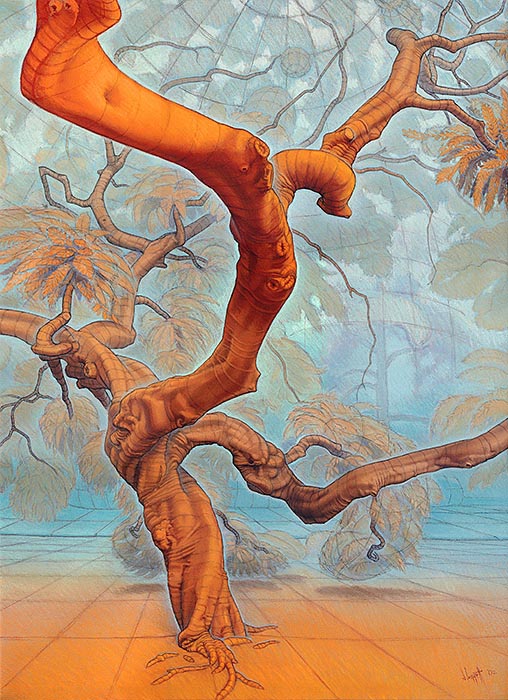
| Prev | Unique Expressions - Overview page 3 (of 3) |
Return to Gallery 4 Overview page
The combination of the exaggerated aerial perspective, with the contour lines and application of grids over surfaces or spaces, creates new types of images. These images are of real 3-dimensional objects and spaces, but they are not photographic in the colours or line-work used. I am not aware of any other person producing images that are anything like these. That is why I can state that these images use my unique expressions of forms and spaces. |

55 cm (w) x 75 cm (h), conté and pastels on acid-free coloured-ground ‘Canson’ paper.
|
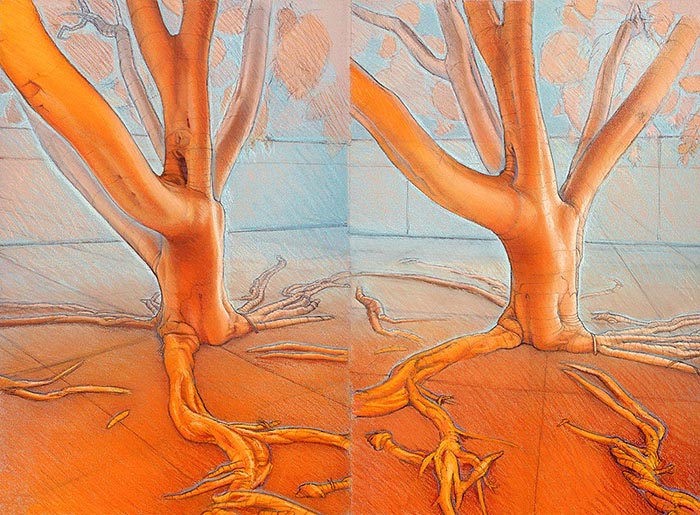
75 cm (w) x 55 cm (h), conté and pastels on acid-free coloured-ground ‘Canson’ paper.
|

58 cm (w) x 76 cm (h), charcoal on cream acid-free drawing paper.
|
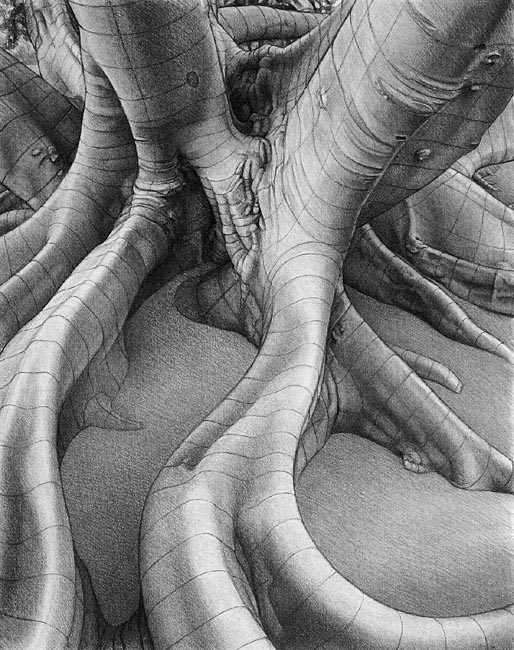
58 cm (w) x 74.5 cm (h), natural charcoal on acid-free drawing paper.
|
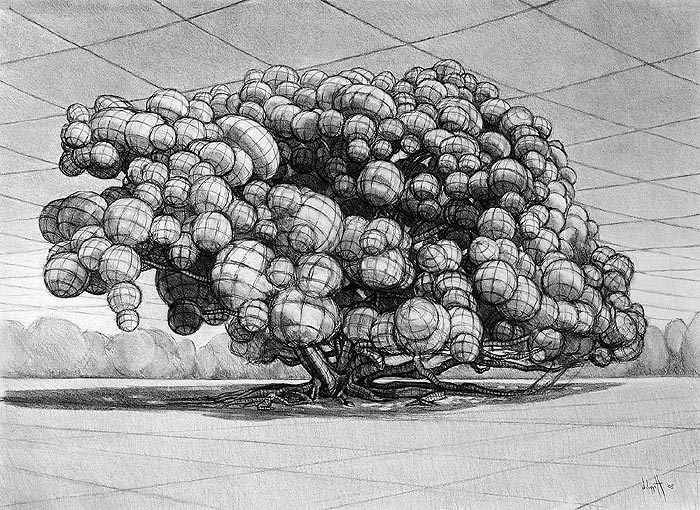
73 cm (w) x 52 cm (h), charcoal on acid-free paper.
|
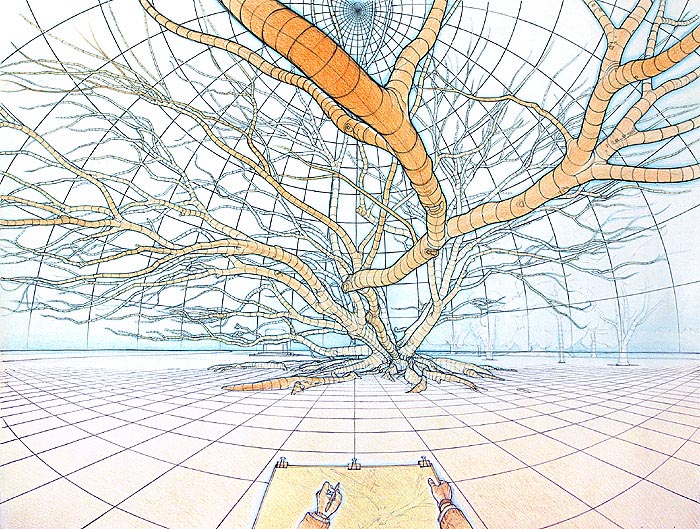
73cm x 53cm, black biro and watercolour pencils on acid-free paper.
|
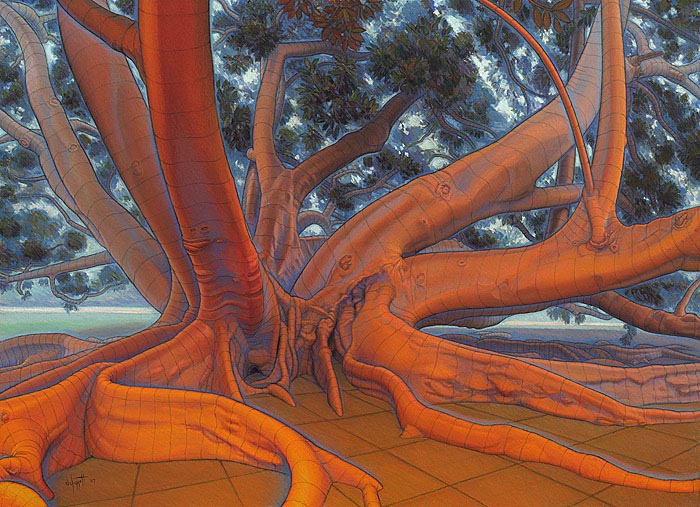
73 cm (w) x 53 cm (h), pastels and charcoal on acid-free paper.This was produced mainly on-site (“en plein air”). With this piece, I tried to produce a strong expression of the tree’s forms, using all of the line work, the tones, and the colours used. Local colours are largely ignored. The colouring used is an exaggerated aerial perspective, where surfaces that are close to me are made more orange (to bring them forward), and surfaces that are more distant are made more blue (to send them back further). I have also tried to indicate the air that surrounds the forms using pale blues around the forms. I have applied these same principles of colour to the ‘forms’ within the canopy, but kept its tone dark, to help enclose the scene - as it feels in reality. Contour lines indicate the cross-sectional shapes of the forms, the orientation of surfaces to the viewer, and set up ‘rhythms of flow’ within the depictions of forms. These lines are ‘felt’ from looking at the real forms and are considered by me to be ex ...more details... |

53 cm (w) x 73 cm (h), pastels on acid-free paper.
|
End of this special display's overview pages.
Return to Gallery 4 Overview page
| Prev | Unique Expressions - Overview page 3 (of 3) |